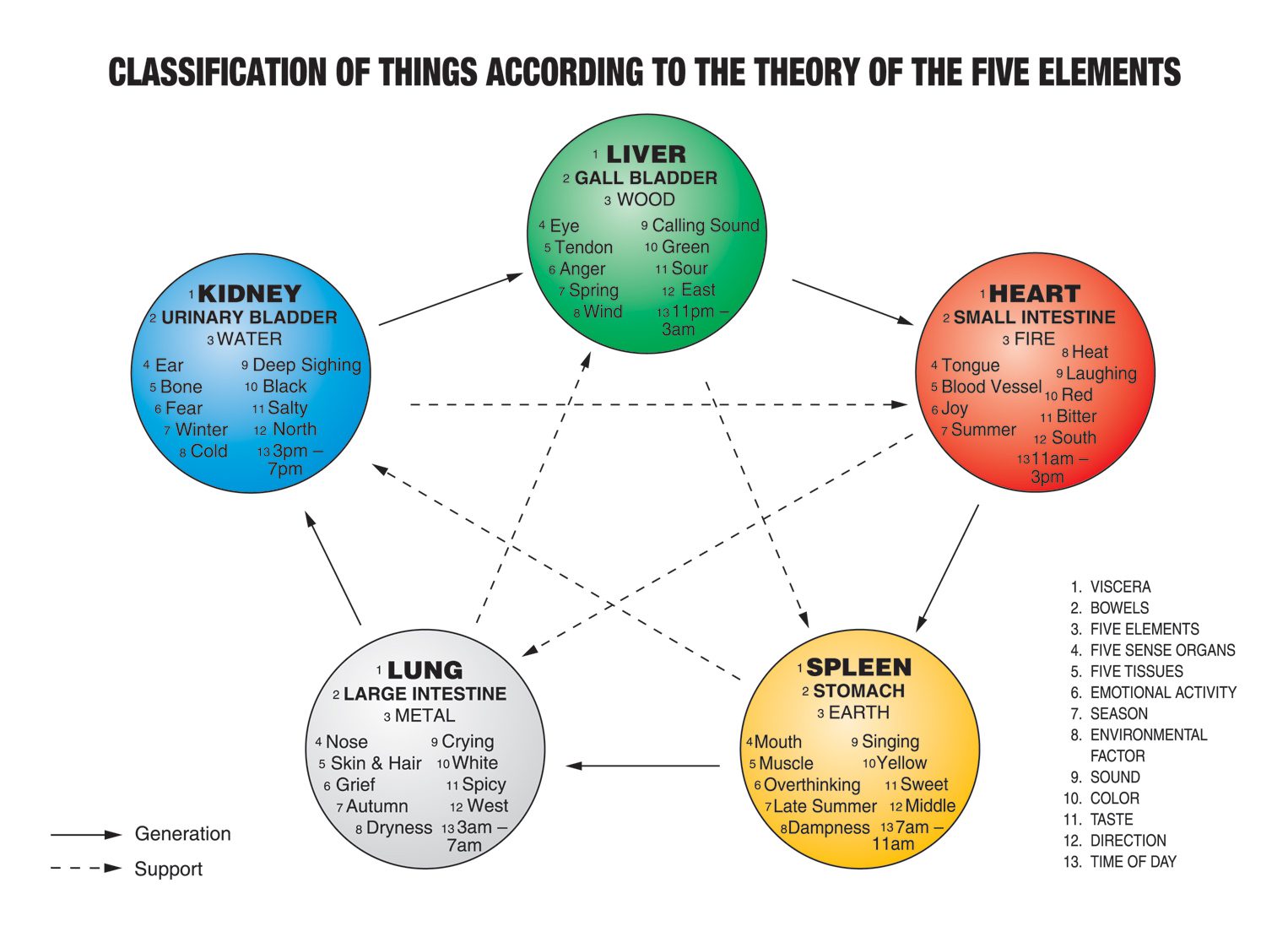Five Element Framework
A Universal Theory Woven into Chinese Culture
TCM’s Five Element framework is ancient and Universal in what it embodies. The Five Elements are deeply woven into the fabric of Chinese culture. In fact, Five Element theory is the foundation of Chinese disciplines such as feng shui, the martial arts, and the I Ching (The Book of Changes, a text also Universal in its understanding and representation of the dynamic balance of opposites and the processes of unfolding events and change).
A Comprehensive Template Reflecting Natural Law
The Five Elements are a comprehensive template that organizes all natural phenomena into five master groups or patterns in nature. Each of the five groups—Wood, Fire, Earth, Metal, and Water—include categories such as a season, a direction, climate, stage of growth and development, internal organ, body tissue, emotion, aspect of the soul, taste, color, sound . . . the categories are seemingly limitless. The Five Elements reflect a deep understanding of natural law, the Universal order underlying all things in our world.
It provides a master blueprint that diagrams how nature interacts with the body and how the different dimensions of our being impact each other. When studying the Five Element Framework it is important to emphasize that this multi-dimensional view of life offers a diagnostic framework to recognize where imbalances—body, mind, emotions, and spirit lie. The Five Elements include the internal organs, and the interconnected relationships between them.
Read more here about how the Five Elements each correspond to one of the major organ systems inside our bodies. Click Here.

A Theory of Connection and Interaction
So what does the Five Element theory say to us about the world we live in? First, it speaks about how all things are connected.
Everything within each element is related. Let’s take the Water element as an example. Look at the Five Element diagram: Water is related to winter, a cold climate, the north, the color black, the Kidneys, the emotion fear. These are things that share a deep, sometimes invisible, connection to each other. When it is winter there is a cold essence, it relates to and impacts in some way the Kidneys, the emotion fear is linked, though not always in an obvious, visible way.
The Five Elements show us how the structures and systems in our bodies are connected to each other; how we are connected to our environment and the natural world; how our world is part of the greater universe. Many people today have lost this deep connection to nature and no longer are able to feel this truth resonate in their being. The Universal principle of connection still exists nonetheless.
The Balancing Relationships of Generation and Support
The Five Elements are five fundamental energies in nature in motion. There is a dynamism between them; they are not static. Within the structure of the Five Elements there are two fundamental relationships: generation and support. Without the balancing nature of these two relationships, things would fall out of order in a flash.
When the Five Elements speak about generation, it means a relationship that nurtures and promotes growth. Think of a mother and child. The mother gives birth to her child and provides her energy to ensure the growth of her child. An example of generation is the relationship between the Kidney and the Liver. (Kidney generates Liver).
Support, in terms of the Five Elements, represents a relationship that acts as a restraining energy or force, making sure that things do not grow too quickly or slowly, neither too strong nor too weak. Without support, things would fall out of proportion; balance would be lost.
The Five Major Organ Systems and the Five Elements
Learn more on how to apply The Five Element Framework to your life. Read more.



